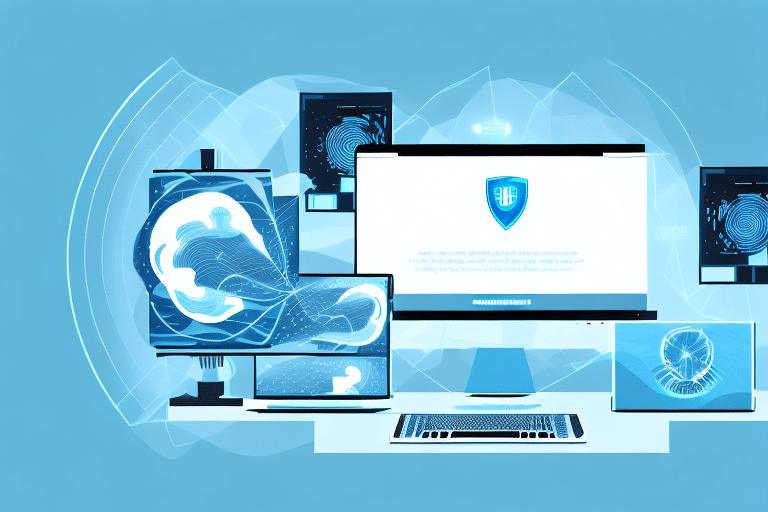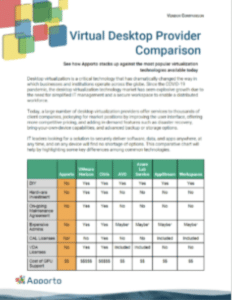What is RDP? Remote Desktop Protocol Explained
Remote Desktop Protocol (RDP) is a proprietary protocol developed by Microsoft that allows users to access and control a remote computer over a network connection. It is widely used in the IT industry for remote administrative tasks, technical support, and accessing files and applications on remote machines.
Understanding the Basics of RDP
Definition of Remote Desktop Protocol
Remote Desktop Protocol, commonly known as RDP, is a protocol developed by Microsoft that enables users to connect and interact with remote computers or virtual desktops. It provides a secure way to control a remote machine as if you were sitting in front of it.
RDP operates on an extension of the International Telecommunication Union (ITU) T.120 family of protocols. This allows for the transmission of graphical user interface (GUI) data over a network connection. By utilizing RDP, users can access files, applications, and even network resources on a remote computer, making it a valuable tool for remote work, troubleshooting, and collaboration.
The History and Development of RDP
Originally introduced in 1996 as part of Windows NT 4.0 Terminal Server Edition, RDP has evolved significantly over the years. Microsoft continually improves the protocol to enhance performance, security, and user experience. Today, it is a foundational component of the Windows operating system, used extensively in various industries.
Over the years, RDP has seen multiple versions released, each bringing new features and improvements. With the introduction of Network Level Authentication (NLA), RDP became even more secure by requiring authentication before a connection is established. Additionally, advancements in encryption algorithms and protocol enhancements have further solidified RDP’s position as a reliable and secure remote access solution.
The Functionality of Remote Desktop Protocol
How RDP Works
RDP operates by transmitting the user’s input, such as keyboard and mouse actions, over the network to the remote machine. The remote machine processes the input and sends back the graphical user interface (GUI) updates to the user’s local machine. This allows users to interact with the remote machine as if they were using it directly.
When a user initiates an RDP connection, a secure communication channel is established between the local and remote machines. This channel encrypts the data being transmitted, ensuring that sensitive information remains protected during the remote session. The encryption protocols used by RDP help prevent unauthorized access to the data being exchanged between the machines, adding an extra layer of security to the remote desktop connection.
Key Features of RDP
RDP offers a wide range of features that enhance its functionality and usability:
- Graphical user interface replication
- Audio and video streaming capabilities
- Clipboard sharing between local and remote machines
- File and printer redirection
Moreover, RDP supports multiple monitor configurations, allowing users to view and work across several screens simultaneously during a remote session. This feature is particularly useful for tasks that require increased screen real estate, such as video editing or software development. Additionally, RDP can adapt to varying network conditions by adjusting the display quality of the remote session in real-time. This dynamic adjustment ensures a smooth user experience, even when network bandwidth fluctuates.
The Benefits of Using RDP
Accessibility and Flexibility
RDP provides users with the flexibility to access their desktops or applications from anywhere in the world, as long as they have an internet connection. This flexibility enables remote work, enhances collaboration, and allows businesses to leverage global talent.
Moreover, RDP offers a secure connection, ensuring that sensitive data remains protected during remote access. This security feature is crucial for businesses dealing with confidential information, providing peace of mind to both users and organizations.
Enhanced Productivity
By using RDP, individuals and organizations can streamline their workflows and enhance productivity. Users can access their work environments remotely, eliminating the need for physical presence or travel. This convenience saves time and resources, enabling users to be more efficient in their tasks.
In addition, RDP allows for easy scalability, making it simple for businesses to adjust resources based on demand. This scalability feature is particularly beneficial for growing companies or those with fluctuating workloads, as it ensures optimal performance without unnecessary costs.
Virtual Desktop Provider Comparison
Security Aspects of RDP
Understanding RDP Security Measures
RDP (Remote Desktop Protocol) is a widely used technology that allows users to access and control a remote computer over a network connection. When it comes to security, RDP incorporates numerous measures to protect sensitive data and ensure secure remote access. One of the key security features of RDP is the encryption of data transmitted over the network. This encryption helps prevent unauthorized parties from intercepting and reading the data being transmitted between the local and remote computers.
In addition to encryption, RDP also employs user authentication protocols to verify the identity of users attempting to establish a remote connection. By requiring users to provide valid credentials, RDP helps ensure that only authorized individuals can access the remote computer. Furthermore, RDP supports network-level authentication, which adds an extra layer of security by authenticating users before they establish a connection to the remote desktop.
Potential Risks and How to Mitigate Them
While RDP provides a secure remote access solution, there are potential risks that users should be aware of. One common risk is the use of weak passwords, which can be easily compromised by attackers. To mitigate this risk, it is crucial for users to follow security best practices, such as using strong and unique passwords for their RDP connections. Strong passwords should be complex, consisting of a mix of letters, numbers, and special characters, and should be changed regularly to reduce the risk of unauthorized access.
Another risk associated with RDP is the potential for security vulnerabilities in the RDP software itself. To address this risk, users should regularly apply security patches and updates provided by the software vendor. These patches often contain fixes for known security vulnerabilities, so keeping the RDP software up to date is essential for maintaining a secure remote access environment. Additionally, implementing two-factor authentication for RDP can further enhance security by requiring users to provide a second form of verification, such as a one-time code sent to their mobile device, before accessing the remote desktop.
RDP vs. Other Remote Access Protocols
Comparing RDP to VNC and SSH
There are several remote access protocols available, each with its own strengths and weaknesses. When comparing RDP to other protocols like VNC and SSH, RDP stands out for its user-friendly interface, efficient performance, and seamless integration with the Windows ecosystem.
Remote Desktop Protocol (RDP) is a proprietary protocol developed by Microsoft that allows users to remotely connect to Windows-based systems. One of the key advantages of RDP is its ease of use, as it is built into Windows operating systems, making it readily accessible for users without the need for additional software installation. Additionally, RDP offers a seamless experience by providing features like file transfer, clipboard sharing, and printer redirection, enhancing user productivity during remote sessions.
Choosing the Right Protocol for Your Needs
When selecting a remote access protocol, consider your specific requirements, such as the operating systems involved, network conditions, and security considerations. Evaluate the pros and cons of each protocol to choose the one that best aligns with your needs and offers the desired level of functionality and security.
Virtual Network Computing (VNC) is another popular remote access protocol that is platform-independent, allowing users to connect to a wide range of operating systems. Unlike RDP, VNC operates at a higher level of the network stack, transmitting graphical desktop environments over the network. While VNC offers cross-platform compatibility, it may not provide the same level of performance and integration with the host operating system as RDP.



